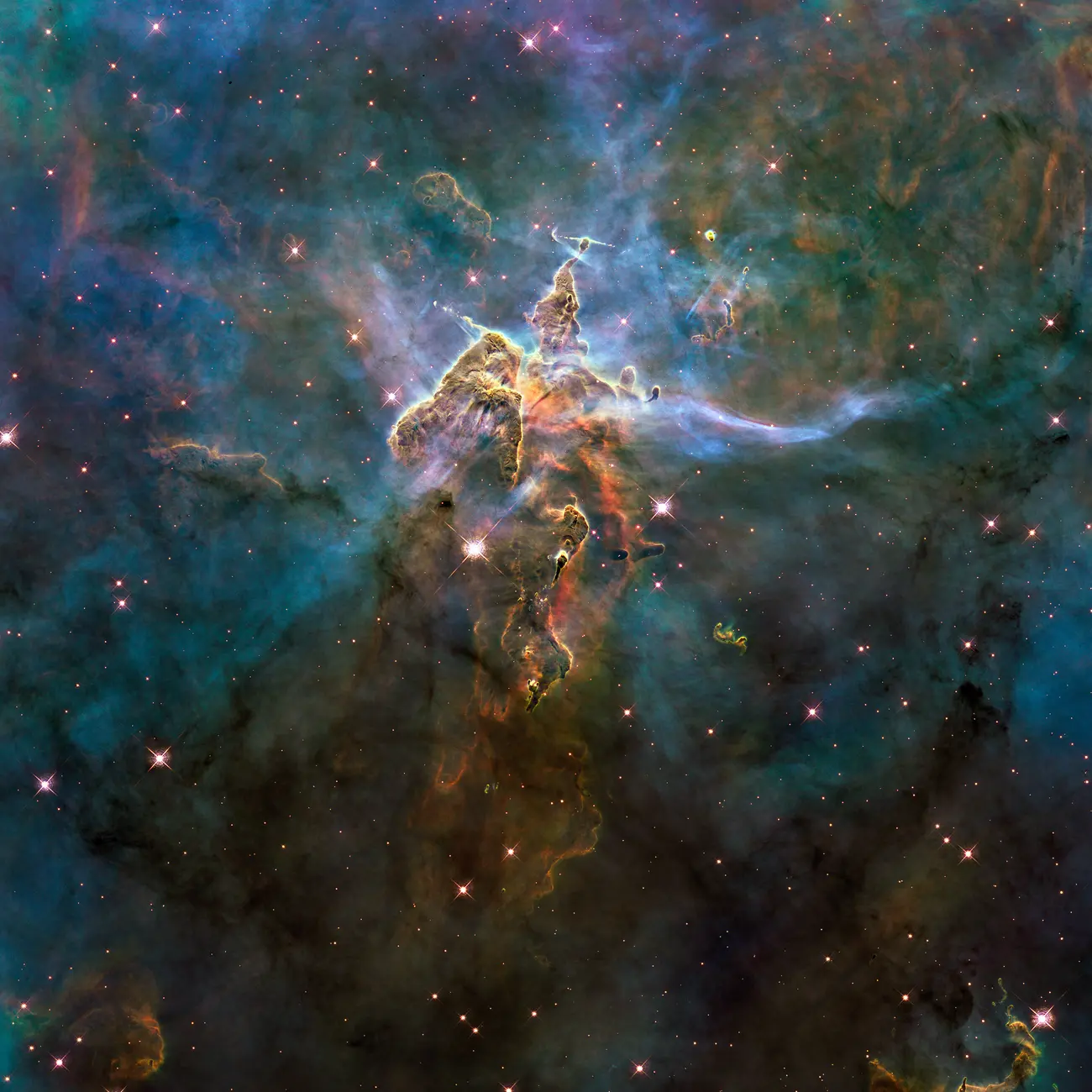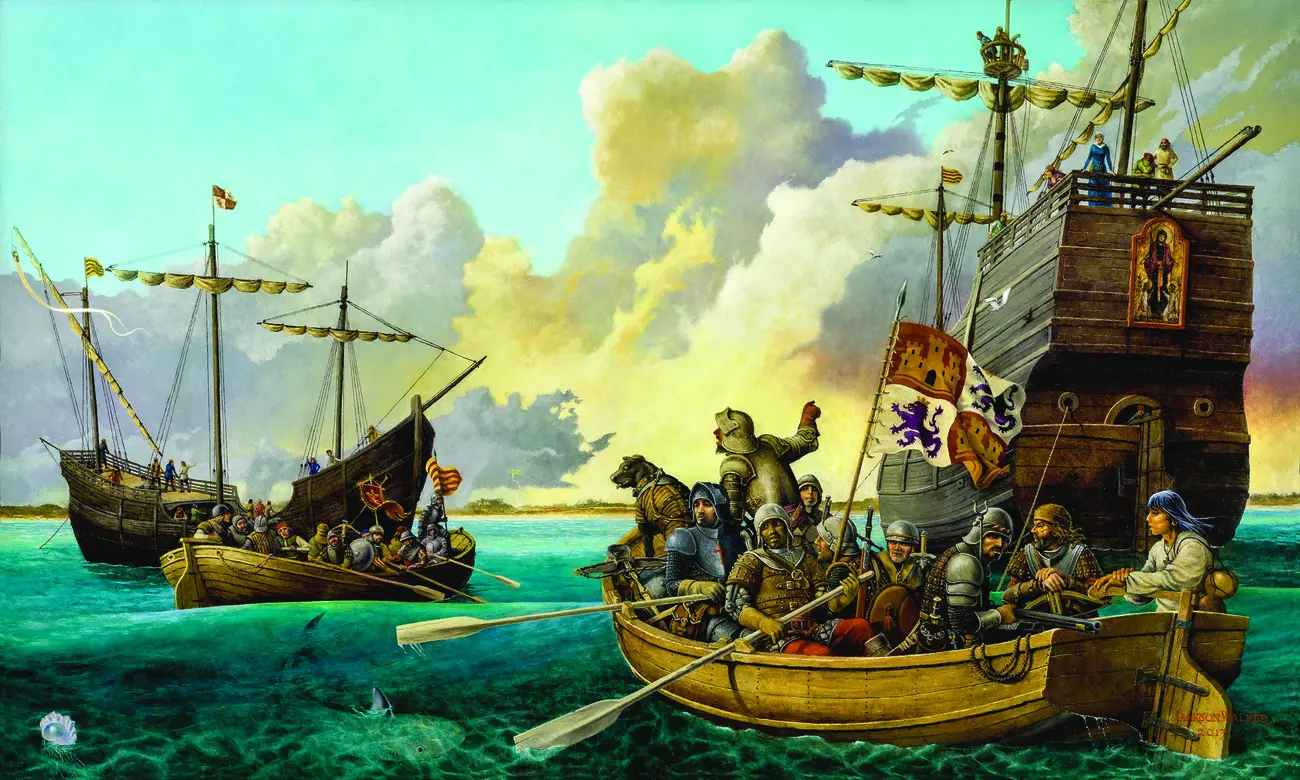More than five centuries ago, Spanish conquistador Ponce de León used celestial navigation to guide his ships to the land he would name La Florida.
Today, the Hubble Space Telescope provides us with incredibly detailed images of celestial bodies that Ponce could have only imagined.
With the event “A New Era of Discovery” to be held November 14 at the Brevard Museum of History and Natural Science in Cocoa, the Florida Historical Society recognizes more than 500 years of exploration with a special showing of the Jackson Walker painting They Called it La Florida, and the new exhibition “Eye on the Universe: The Hubble Space Telescope.”
The Florida House in Washington, D.C. owns the Walker painting depicting Ponce’s 1513 landing in Florida, and is loaning the work to the Brevard Museum of History and Natural Science. The artist is pleased to see this painting visiting Florida, particularly Brevard County.
Ponce’s own records indicate that he first landed in Florida just north of present day St. Augustine. “A second landing further south resulted in a first sighting of inhabitants,” says Walker. “Those people were the Ais Indians, natives of Brevard County.”
A team from Delaware North and the Kennedy Space Center Visitor Complex is designing and installing the $200,000 exhibit “Eye on the Universe: The Hubble Space Telescope” at the Brevard Museum of History and Natural Science. The exhibit is on extended loan.
“We tell the NASA story to people from around the world,” says Therrin Protze, Chief Operating Officer of Delaware North Corporation Parks and Resorts at Kennedy Space Center.
“A natural extension is to share NASA content through other educational learning centers in our community. We are partnering with the Brevard Museum of History and Natural Science to share the amazing story of the Hubble Space Telescope. This community outreach enables our organizations to inspire young minds through science, technology, engineering and mathematics (STEM) content.”
Launched into space in 1990 aboard the Space Shuttle Discovery, the Hubble Space Telescope is helping us to better understand our universe.
“Because of Hubble, we understand how planets and galaxies form, have documented black holes and have discovered dark energy – an unusual force causing the universe to expand faster and faster as time passes,” says Protze. “The size of a school bus, Hubble has seen galaxies that are billions of light years away as well as the birth and death of stars.”
The new “Eye on the Universe” exhibit features large scale models of the shuttle Discovery and the Hubble Telescope. Some of the amazing images captured by Hubble are also displayed.
“The Brevard Museum of History and Natural Science has dedicated a huge amount of space for the Hubble exhibit,” says Protze. “To prepare for the installation, Delaware North crewmembers are making drywall repairs, painting walls, readying surfaces, adding lighting effects, creating background music, designing custom graphics and installing the exhibit.”
At the special event “A New Era of Discovery,” there will be live music, gourmet hors d’oeuvres, beer and wine, and the new exhibits commemorating human exploration from Ponce de León to the Hubble Space Telescope.
The Brevard Museum of History and Natural Science will also be showcasing their current exhibits including skeletons of a mastodon, a giant ground sloth, and a saber tooth tiger. An exhibit on the Windover Archaeological Dig is featured, along with an extensive collection of archaeological artifacts.
The museum is now also home of the Florida Historical Society Archaeological Institute. Bruce Piatek is director of both the institute and the museum. Piatek believes that the archaeological exhibits and the new Hubble exhibit complement each other.
“Archaeologists look at the past,” says Piatek. “We excavate sites to try to find artifacts that tell us about the history of humankind. Astronomers do something very similar. When you look at the images from the Hubble Space Telescope, you’re actually looking at light that is millions if not billions of years old. As astronomers look at the universe, they’re looking back in time as well, to learn more about our world and our universe.”
Dr. Ben Brotemarkle is executive director of the Florida Historical Society and host of the radio program “Florida Frontiers,” broadcast locally on 90.7 WMFE Thursday evenings at 6:30 and Sunday afternoons at 4:00, and on 89.5 WFIT Sunday mornings at 7:00. The show can be heard online at myfloridahistory.org.

